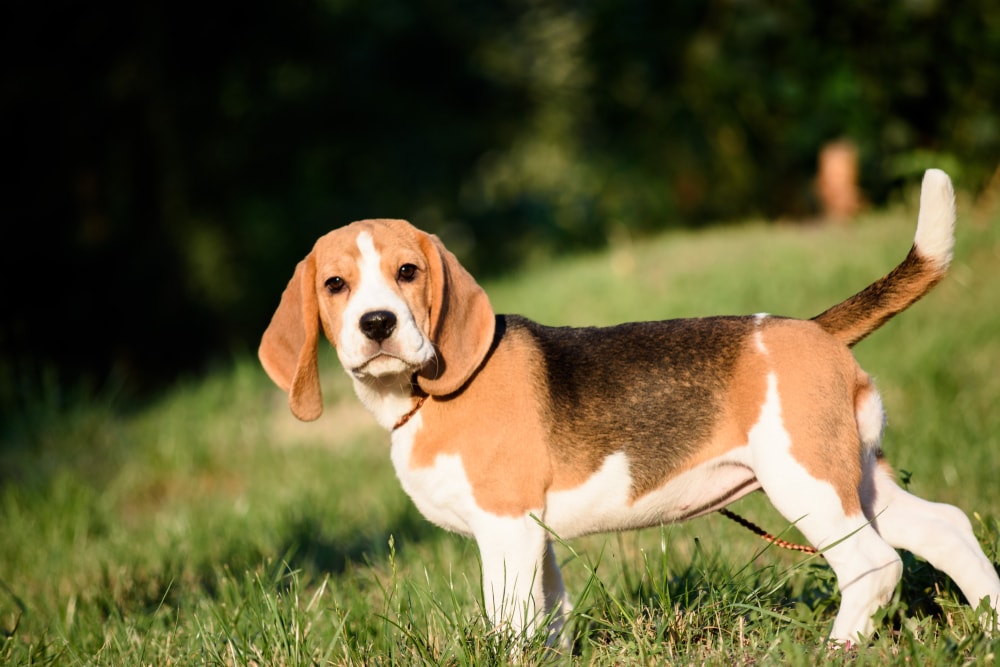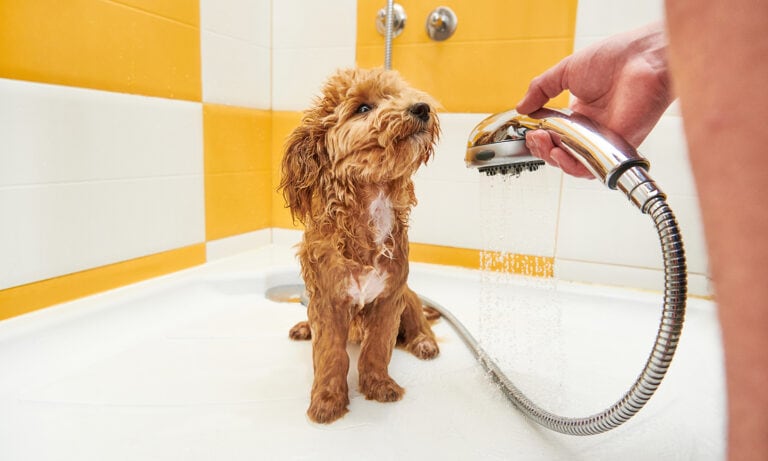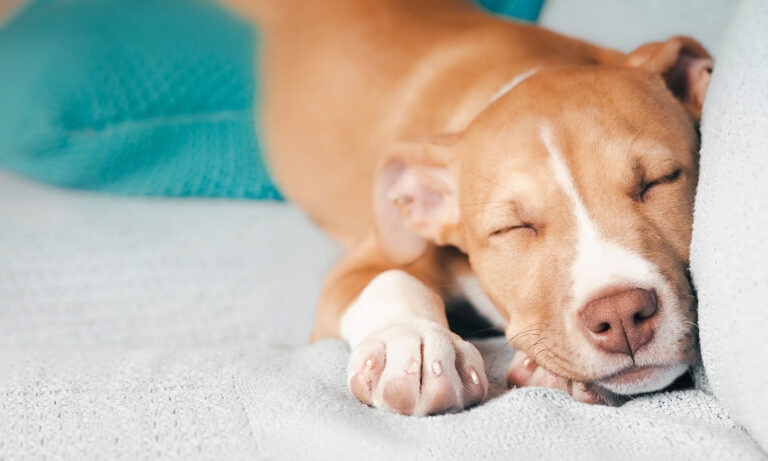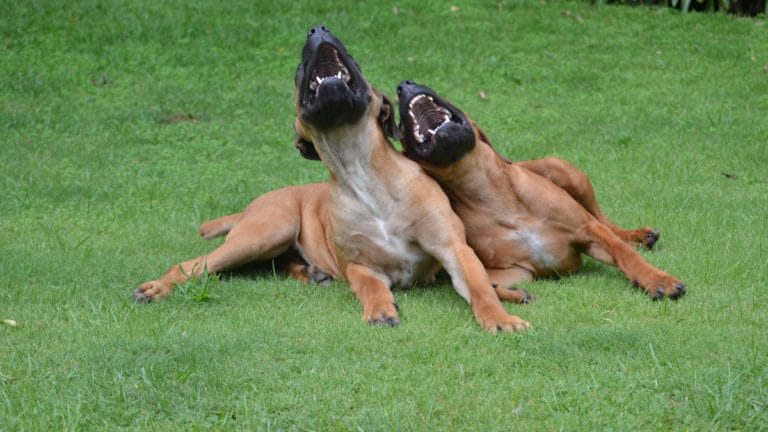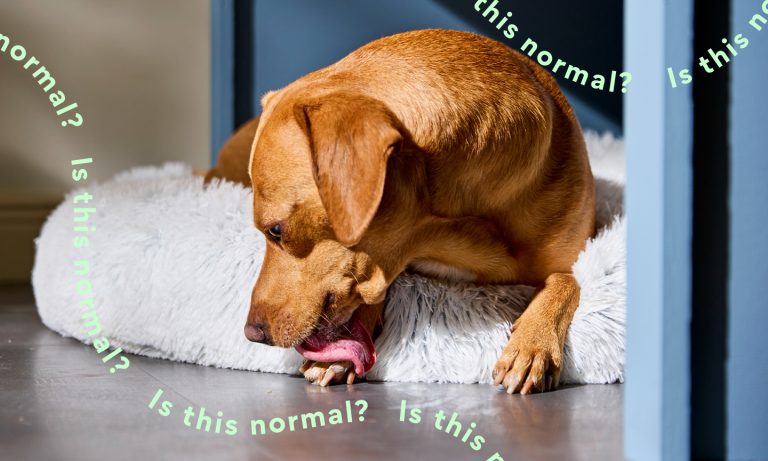If you see a Foxhound or Harrier of correct and true breed type, you will never have to guess if it is an American, English or Harrier hound. It is indisputable that all three hound breeds arose from common ancestors. Harriers were bred down in size from English Foxhounds and are accurately described as “a smaller version of the English Foxhound.” At the time of the American Revolution, Lord Fairfax sent several English Foxhounds to George Washington, who is credited with crossing these hounds with various sighthounds to produce the foundation of the American Foxhound breed.
All three hound breeds were developed to hunt in packs followed by mounted huntsmen, having all the attributes of scenting pack hounds. However, since quarry and terrain differed, the breeds evolved in various ways to better suit their jobs.
When dog breeders, exhibitors and judges meet to discuss what makes each breed unique, they use terms such as “head breed” and “outline breed.” If they were to describe the English Foxhound, American Foxhound or Harrier in such stereotypical fashion, they would call them “running gear breeds,” indicating the importance of feet and legs in these functional pack hounds.
The AKC breed standard for the English Foxhound, composed more than 50 years ago by fox hunters, outlines the essential components of a successful working hound. The scale of points assigns 20 points to legs and feet, 5 points to elbows, 10 points to hindquarters and 10 points to shoulders, awarding 45 of 100 points to the merits of the hound’s running gear. Assigning only 5 points to the head eliminates any notion that the English Foxhound ever be thought of as a “head breed.”
The American Foxhound breed standard also includes a scale of points, assigning a full 15 points to the feet alone, included in the total 35 points for running gear. Shoulders are assigned another 15 points.
The Harrier standard itemizes running gear, along with scenting ability, as particularly important features of this scenting pack hound.
Feet and Legs
Correct feet are essential in ensuring a hound a full working life in the field. The desired round “cat feet” in the English Foxhound and Harrier breeds have “well-developed knuckles.” Also, “strong horn,” or pads, are required for durability in running many miles while hunting. When standing, the hound should have his weight distributed evenly on all of his toes and the heel of his foot. To do so, he must not be “knuckled over” or have exceedingly upright pasterns.
The American Foxhound foot is described as “fox-like,” with full, hard pads, well-arched toes and strong nails. The slightly longer center toes differentiate the American hound’s foot from his English and Harrier cousins.
One notable difference in the Harrier foot is that it is considered acceptable, but not required, for the toes to turn slightly inward. When moving, a slight toeing in of the front feet is countenanced.
The Foxhound’s pasterns must be slightly sloping and flexible, having elasticity to act as shock absorbers when the feet hit the ground. Although never exaggerated in any of the three dog breeds, the sloping pasterns may be slightly more apparent in the American hound.
The English Foxhound standard calls for “legs as straight as a post, and as strong,” and states that “bone cannot be too large,” with “size of bone at the ankle being especially regarded as all important.” This conveys an image of powerful round columns of bone extending well down to the feet and tapering only slightly at the ankle. However, the authors of the breed standard acknowledge that “desire for straightness has a tendency to produce knuckling-over,” which is to be “eradicated by careful breeding.”
The American Foxhound should have straight forelegs from elbows to feet, and be well boned, but not as heavy proportionally as the Harrier or English Foxhound. Recently, the American Foxhound Club revised its standard to add “with pasterns strong, flexible and very slightly sloping” to the description of the forelegs. Bred to hunt over a different sort of country, the American is racier and lighter-built overall.
In motion, all three breeds’ forelegs should swing freely, like the pendulum of a clock, with maximum efficiency. This can only occur with elbows “set quite straight, and neither turned in nor out,” as described in the English standard. If the elbows turn out, the hound will move with an inefficient paddling action. On the other hand, tied-in elbows restrict movement and decrease length of stride and speed. The old hound books, in some folks’ dog supplies, describe what we call “upper arm” as “true arm” or “elbow slash,” calling for length here to give the foreleg plenty of room for extension in a long, ground-covering stride. The English standard calls for “muscular, but free from fat or lumber.
Shoulders and Hocks
All three breed standards use similar language to describe the shoulders as “long and muscular, without being heavy.” A properly constructed hound should not be “loaded” in the shoulders but should show firm muscling from proper exercise and conditioning. “Well sloped,” rather than upright shoulders are crucial to the hound’s capacity to move efficiently, in concert with the proper cushioning action of the pasterns to reduce jarring and joint strain, and to increase endurance.
Since “endurance is of even greater consequence than speed,” moderate angulation is desirable in all of these pack hounds. Strong “propellers,” or hindquarters, with hocks set low, contribute to the essential rear drive. Cow hocks or sickle hocks are not strong or correct.
When viewing a well-constructed Harrier or Foxhound in profile standing naturally, the hocks should be perpendicular to the ground, and the breast bone should be visible in front. This is a quick way to assess that the point of the shoulder is in the correct position, the shoulder blade well laid back and the hindquarters set on properly. In a balanced hound, one’s eye should naturally rest on the center of gravity. With the hound standing in profile, that will be a few inches to the rear of the shoulders and halfway up the ribs. If loaded in front, the hound will appear top-heavy and will pound the ground when moving. This lack of balance robs the hunting hound of efficient motion.
Head and Neck
Along with the all-important running gear of the Harrier and Foxhounds, additional parts contribute to make these scent hounds unique. Head, neck, chest, ribs, back, loins, stern and coat are not cosmetic details but specialized features developed with a functional purpose in mind.
The English and Harrier heads are full, without being heavy or coarse, with a well-defined stop. The long, wide muzzle with open nostrils, an optimal scenting structure, has a square finish to the lip. Wedge-shaped, snipey or dish-faced appearances are undesirable. A more masculine head is appropriate in a dog hound.
The American Foxhound head should be readily distinguishable from the other two similar breeds. The ears are set on moderately low, approximately on level with the outer corner of the eye. The ears should reach nearly to the tip of the nose when drawn out and be broad and of fine texture, with almost entire absence of erectile power. The typical American hound head is slightly more wedge-shaped when viewed from the front, in comparison to the quite rectangular English Foxhound and Harrier heads.
Because of breeders’ efforts to achieve a strong underjaw, undershot bites have become a problem in English Foxhounds. The breed standard requires that an undershot or overshot hound be disqualified, while level or scissors bites are correct.
A dark eye and small, triangular ears lying close to the cheek give the hound an alert, intelligent expression. In England and most parts of the world today, the practice of ear cropping or “rounding” is a thing of the past. Ear sets in English Foxhounds and Harriers tend to be higher than in the American hounds. The necks of all of these pack hounds should be long, clean and tapering from shoulders to head, without any loose skin under the throat. Well-muscled and elegantly arched, this proper neck allows the hound’s scenting apparatus to reach the ground easily, even at a gallop.
Body and Coat
While sufficient spring of rib is essential for heart and lung room, depth of rib is most important. Barrel-shaped ribs interfere with the free action of the front legs, and shallow back ribs rob the hunting hound of stamina. In a correctly conformed English or Harrier, deep back ribs, running well back, will give a flat appearance to the underline, with only a slight tuck-up noticeable. In contrast, the American hound’s chest is narrower in proportion to the English Foxhound, with emphasis on a flank to allow springiness, having a more sloping underline created by the more tapered ribcage construction.
The English Foxhound and Harrier standards are very clear in stating that the topline be “absolutely level.” The close-set shoulder blades should blend smoothly into the hard, muscular back. The backbone, set between two lines of muscle, creates a barely discernible arch at the loin, which should not be confused with a roached back. This flatter, level back is for endurance, as opposed to the slightly more prominent rise over the loin desired in the faster American hounds. In no case should any of these hounds exhibit the inflexible “wheel back” that robs them of flexibility and agility. In each breed, loins are strong and broad, and hip bones are set wide apart. Narrow, weak loins are a defect.
The Foxhound breeds, as well as the Harrier, exhibit a tail, or stern, set on quite high and carried up but never over the back. The end tapers to a point, with a fringe of hair on the underside. This straight, white-tipped “flag” is easily visible waving in the field.
All three breeds’ coats are short, dense, hard and glossy, designed to be protective in all weather and terrain. Coat color is not important, as long as it is a good hound color, detailed in the English standard as “black, tan and white, or any combination of these three, also the various ‘pies’ compounded of white and the color of the hare and badger, or yellow, or tan.” In judging Harriers or Foxhounds, all acceptable colors are equal because these wash-and-wear hounds are not to be merely pretty or flashy show dogs. Packs often breed for similarly colored hounds, contributing to a uniform pack appearance and quick identification afield.
Proportion and Size
Proportion is the description of the overall make and shape of the hound. The essence of Harrier and Foxhound breed type is a hound with the proper amount of substance for the size of the hound. The hound is a picture of strength without coarseness and substantial bone without sacrificing flexibility.
A level pack is a group of hounds similar in size and structure, working well together, in part due to like conformation. Various huntsmen breed larger or smaller hounds, largely according to the country hunted. As a rule of thumb, the hound should not be too large to go through thick brambles and undergrowth, or too small to negotiate the obstacles indigenous to the country. He is not massively built or cumbersome, but rather appears balanced, active, athletic and symmetrical. Height in inches is not as important as proportion of substance to size of hound. In general, English Foxhounds range from 24 to 26 inches at the shoulder, although somewhat taller or shorter hounds may be equally correct. The ideal size for a Harrier is 19 to 21 inches for dogs and bitches, with a variation of 1 inch in either direction being acceptable, and no disqualification for size. The American Foxhound standard was revised to describe the dog hound as standing from 23 to 28 inches, with bitches from 21 to 26 inches. In studying these height ranges, one can see that these breeds are not to be differentiated on size alone.
The breed standard serves as a reference guide, stating that “the symmetry of the Foxhound is of the greatest importance, and what is known as quality is highly regarded by all good judges.” Breeders and judges must develop an understanding of which elements of the standard are vital to the breed and therefore take precedence over other features.
Temperament
The Harrier and Foxhounds, developed to perform a task, have the character and disposition to suit the task. They must live and work with other hounds in a pack, where a quarrelsome nature is unacceptable. Historically, the job of these hounds has provided the test for soundness, both mental and physical. Those that didn’t measure up did not continue in the gene pool.
The sum of the parts — plus symmetry, balance, quality, scenting ability, endurance speed, voice and the temperament to work with other hounds in a pack — are the essential traits of the modern Harrier and Foxhounds.
From the June 2013 issue of Dogs in Review magazine.
Posted By: Chewy Editorial
Share:
